Are you ready to transform your garden with the help of The Garden Rehab DIY guide? Get ready to revive your outdoor space and create a stunning garden makeover that will leave your neighbors in awe.
Finding the motivation to tackle a neglected garden can be overwhelming, but with the right tools and techniques, you can breathe new life into your outdoor oasis. An overgrown garden not only poses challenges to maintenance but can also hinder the health of the soil and disrupt the flow of your walkways. However, don’t let that discourage you. By taking small steps and following the right guidance, you can turn your neglected garden into a thriving sanctuary.
One important tip is to wait and observe the natural growth cycles of your garden for a year. By doing this, you’ll gain valuable insights into how your garden looks in different seasons, allowing you to make informed decisions on what needs to be changed and what can be kept. Additionally, it’s crucial to identify any poisonous plants that may be present and handle them safely to prevent any undesired consequences.
Testing the soil is another essential step in your garden rehab journey. By analyzing the soil’s nutrients and pH levels, you can address any imbalances and create an environment that promotes healthy plant growth. With this knowledge, you can make informed decisions about fertilizers and other amendments needed to nourish your garden.
Before diving into the fun part of designing your garden, it’s crucial to clear out unwanted weeds and shrubs that may be overpowering the space. This step will create room for new growth and allow you to envision your garden’s potential more clearly. Additionally, pruning plants and rearranging rocks can help you achieve your desired garden design, adding a touch of beauty to your outdoor space.
A successful garden makeover requires careful planning and sticking to a theme. Visualize how you want your garden to look, whether it’s a tranquil Japanese-inspired oasis or a vibrant flower-filled haven. By conceptualizing and selecting a theme, you can ensure that every element of your garden works harmoniously together.
During rehab, it’s important to be aware of hidden dangers, such as poisonous plants, and handle them properly. Educating yourself about potential risks and taking necessary precautions can create a safe environment for yourself and your loved ones to enjoy.
Boosting soil fertility is essential for a thriving garden. Consider planting cover crops, which add nutrients to the soil and help prevent erosion and improve its overall health. These green companions will work wonders for your garden’s vitality.
Maintaining your garden regularly is key to preventing major overhauls in the future. By staying on top of weeding, watering, and general maintenance, you can ensure that your garden remains a beautiful and enjoyable space year-round.
Lastly, embrace the power of sustainability and eco-friendliness in your garden. Implement practices such as rainwater harvesting, mulching, and selecting native plants to create a more environmentally conscious outdoor space.
Key Takeaways:
- Start by observing the natural growth cycles of your garden for a year to make informed decisions about changes.
- Identify and handle any poisonous plants present in your garden safely.
- Test the soil to determine nutrient deficiencies and promote healthy plant growth.
- Clear out unwanted weeds and shrubs to create space for new growth and design elements.
- Plan your garden design and stick to a theme for a cohesive and visually pleasing result.
With The Garden Rehab DIY guide in hand, you have the resources to revitalize your neglected garden and transform it into a breathtaking outdoor sanctuary. Don’t wait any longer – it’s time to embark on your garden rehab journey and create the garden of your dreams!
Easy Tips and Tricks for Garden Restoration
Embarking on a garden restoration project can be overwhelming, but with these easy tips and tricks, you’ll be able to tackle it like a pro. Start by taking baby steps and observing your garden in all seasons for a year. This will give you a better understanding of its natural growth cycles and help you make informed decisions about what changes to make.
Create a list of what needs to be changed and what can be kept in your garden. This will serve as a roadmap for your restoration project. Don’t forget to identify any poisonous plants that may be present in your garden and handle them with care.
Testing your garden’s soil is crucial for its overall health. Determine what nutrients your soil lacks by conducting a soil analysis. This will guide you in selecting the right fertilizers and amendments to improve its fertility. Clearing out unwanted weeds and shrubs is another important step in the restoration process. This will create space for new growth and design elements in your garden.
When it comes to pruning and designing your garden, don’t be afraid to reshape plants and rearrange rocks to achieve your desired look. Plan what you want your garden to look like and stick to a theme throughout the rehabilitation process. This will help create a cohesive and visually appealing space.
Remember to be aware of hidden dangers, such as poisonous plants, and take the necessary precautions to handle them safely. Additionally, consider planting cover crops to boost soil fertility and prevent erosion. Regular garden maintenance is essential in order to avoid major overhauls in the future and keep your garden looking its best all year round.

Assessing and Testing Your Garden’s Soil
Before diving into your garden transformation journey, take the time to assess and test your garden’s soil to ensure optimal growth conditions for your plants. A healthy and well-balanced soil is the foundation for a thriving garden. By understanding the composition and characteristics of your soil, you can make informed decisions when it comes to fertilizing, watering, and selecting suitable plants.
Start by conducting a soil test to determine its pH level and nutrient content. This will provide valuable insights into any deficiencies or imbalances that may exist in your soil. You can purchase a soil testing kit from a local gardening center or send a sample to a professional laboratory for analysis. Once you have the test results, you can make targeted amendments to improve the soil quality.
In addition to testing, it is important to assess the physical properties of your soil. Observe its texture, drainage capabilities, and water retention capacity. Sandy soils drain quickly but may struggle to retain moisture, while clay soils hold water but can become compacted. Loamy soils, which have a balanced composition of sand, silt, and clay, are considered ideal for gardening. Understanding your soil type will help you choose appropriate plants and implement suitable gardening practices.
| Soil Type | Characteristics |
|---|---|
| Sandy Soil | Drains quickly, low water retention |
| Clay Soil | Heavy and compacted, holds water |
| Loamy Soil | Well-balanced, ideal for gardening |
Remember, soil is a living ecosystem that supports the growth and vitality of your plants. By assessing and testing your garden’s soil, you can make informed decisions and provide the necessary care to create a thriving and beautiful outdoor space.
Key Takeaways:
- Assess and test your garden’s soil to understand its pH level, nutrient content, and physical properties.
- Conduct a soil test to determine deficiencies or imbalances that need to be addressed.
- Observe the texture, drainage capabilities, and water retention capacity of your soil to determine its type.
- Make targeted amendments and choose suitable plants based on the characteristics of your soil.
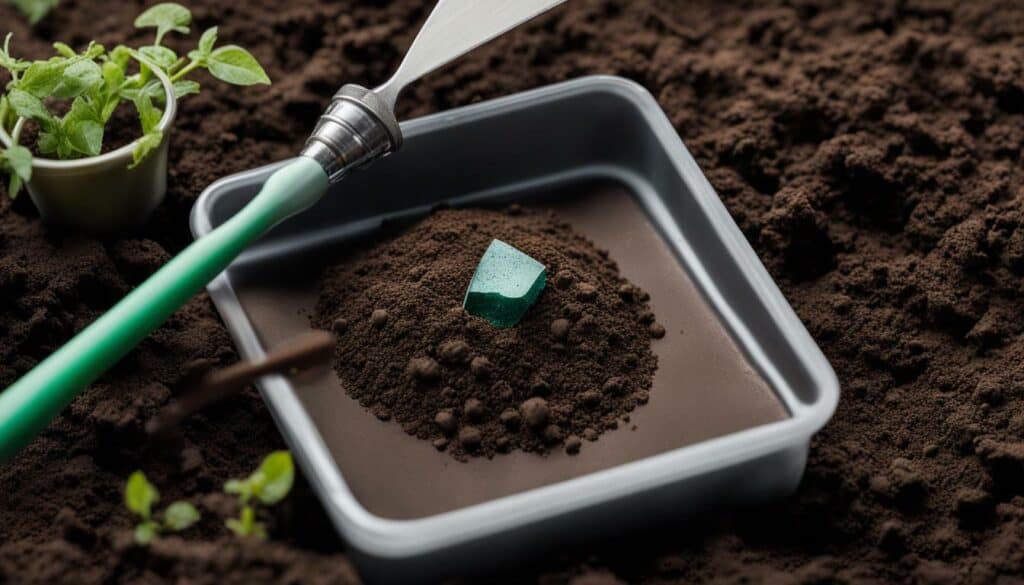
One of the first steps in reviving your garden is to clear out those pesky weeds and unwanted shrubs that have been taking over your outdoor space. The presence of these plants can hinder the growth of your desired foliage and hinder the overall aesthetic appeal of your garden.
To efficiently tackle this task, start by identifying the types of weeds and shrubs that need to be removed. Different plants require different removal techniques, so it’s essential to take the time to research and identify the best approach for each. A comprehensive list of invasive plants and their management techniques can be found on gardening websites or by consulting with local gardening experts.
To prevent the regrowth of weeds, consider using a combination of manual removal and herbicides. For larger areas, the use of herbicides can be an effective method to eradicate persistent weeds. However, always follow the instructions provided by the manufacturer and take the necessary precautions to protect yourself and the environment.
Once the unwanted vegetation has been cleared, it’s time to envision your new garden design. Consider the shape and layout of your garden beds and pathways. Moving rocks and rearranging plants can provide a fresh start and create a more visually appealing space. Don’t be afraid to experiment and try different arrangements until you find the perfect balance.
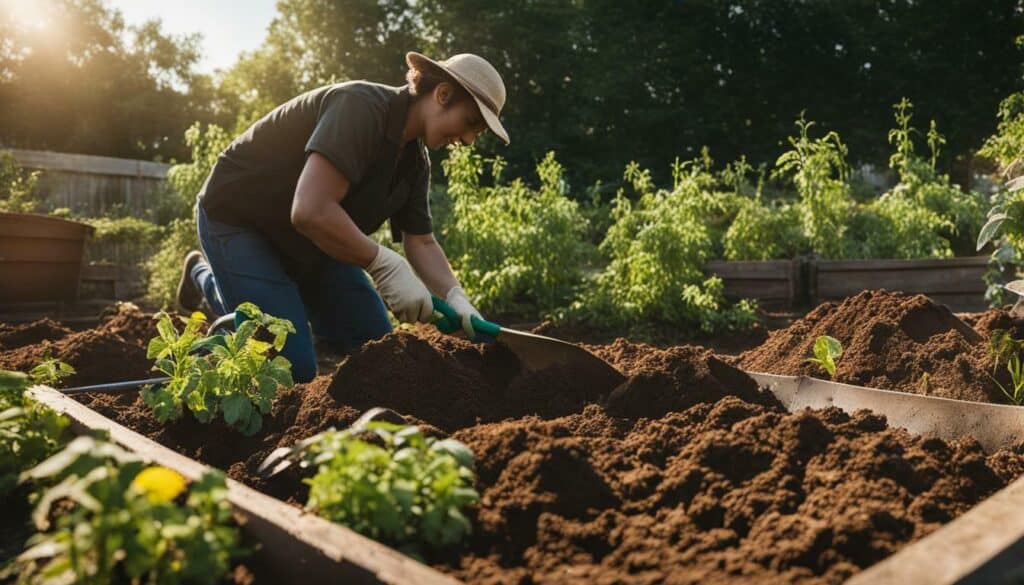
| Weed Type | Removal Technique |
|---|---|
| Dandelion | Manual removal using a weeding tool |
| Crabgrass | Hand-pulling or using a pre-emergent herbicide |
| Bindweed | Systemic herbicide application |
| Japanese Knotweed | Professional removal is recommended |
| English Ivy | Manual removal and regular maintenance |
Remember, the process of clearing out unwanted weeds and shrubs is just the first step in revitalizing your garden. Stay tuned for our next section, where we will explore the art of pruning and designing your garden to create a visually pleasing and functional outdoor space.
Pruning and Designing Your Garden
With a little bit of pruning and a touch of creativity, you can transform your garden into a beautiful oasis that reflects your unique style. Pruning is an essential step in garden rehab as it helps shape plants, control growth, and improve overall health. Start by identifying any overgrown branches or dead foliage and trim them back to encourage new growth. Remember to use clean and sharp pruning tools to minimize damage to the plants.
When it comes to designing your garden, think about the layout, focal points, and color schemes that you want to incorporate. Use plants, rocks, and other elements to create visual interest and define different areas. Consider adding a water feature or a seating area to enhance the ambiance of your garden. Don’t be afraid to experiment and try new ideas; after all, it’s your garden and a reflection of your personal style.
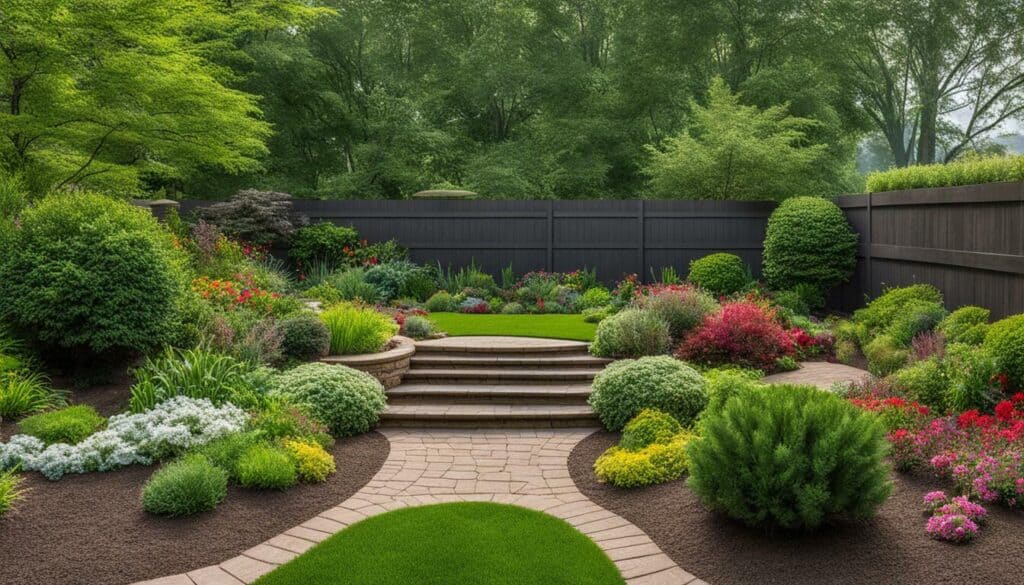
“A garden is a grand teacher. It teaches patience and careful watchfulness; it teaches industry and thrift; above all, it teaches entire trust.” – Gertrude Jekyll
Creating a Garden Design Plan
Before you start pruning and designing your garden, it’s important to have a clear plan in mind. Take some time to envision what you want your garden to look like and consider the practical aspects such as sun exposure, soil type, and maintenance requirements. Make a rough sketch or use a digital tool to map out your ideas and experiment with different layouts.
When planning your garden design, think about the overall theme or style you want to achieve. Whether it’s a formal English garden, a tropical paradise, or a minimalist Zen retreat, having a cohesive theme will help guide your plant and decor selections. Research different garden styles for inspiration and adapt them to suit your space and preferences.
| Tip: | Consider incorporating native plants into your garden design. They are well-adapted to the local climate and require less water and maintenance compared to exotic species. Native plants also provide food and shelter for local wildlife, contributing to a healthier ecosystem. |
|---|---|
| Benefit: | A well-designed garden not only enhances the visual appeal of your outdoor space but also creates a welcoming and relaxing atmosphere. It can be a place to escape from the stresses of daily life, entertain guests, or simply enjoy the beauty of nature. |
Remember, designing your garden should be a fun and creative process. Don’t be afraid to experiment, try new ideas, and make adjustments along the way. With a little patience and a lot of love, you can create a garden that brings joy and tranquility to your life.
Planning and Sticking to Your Garden Theme
A well-planned garden theme sets the stage for a successful garden revival. Discover how to choose and stick to a theme that will bring your vision to life.
When embarking on a garden rehabilitation project, it’s essential to have a clear vision in mind. Think about the atmosphere and style you want to create in your outdoor space. Do you envision a tranquil oasis, a vibrant burst of colors, or a minimalist retreat? This theme will guide your decisions and tie everything together harmoniously.
Consider the existing features of your garden and how they can be incorporated into your chosen theme. Are there mature trees that can become the focal point? Are there natural stone formations that can be accentuated? By working with what you already have, you can save money and time while adding a unique touch to your garden.
Creating a Garden Mood Board
To ensure that your garden theme remains consistent, creating a mood board can be a valuable tool. Gather inspiration from magazines, websites, or even take photos of gardens that inspire you. Include images of plants, colors, textures, and furniture that align with your desired theme.
Assemble these pictures on a physical or digital board, allowing you to visualize how the elements will come together in your garden. This visual reference will help you make informed decisions when selecting plants, accessories, and materials.
Remember, your garden theme should reflect your personal taste and preferences. It’s your outdoor sanctuary, and it should bring you joy and relaxation. With careful planning and adherence to your chosen theme, your garden will flourish and become a true reflection of your style.
| Benefits of Planning and Sticking to a Garden Theme: |
|---|
| Creates a visually cohesive and harmonious outdoor space |
| Saves time and money by working with existing features |
| Allows for personalization and expression of your style |
| Provides a clear direction for selecting plants, accessories, and materials |
So, revive your garden with a well-thought-out theme and watch it transform into a beautiful haven that brings you joy and relaxation for years to come.
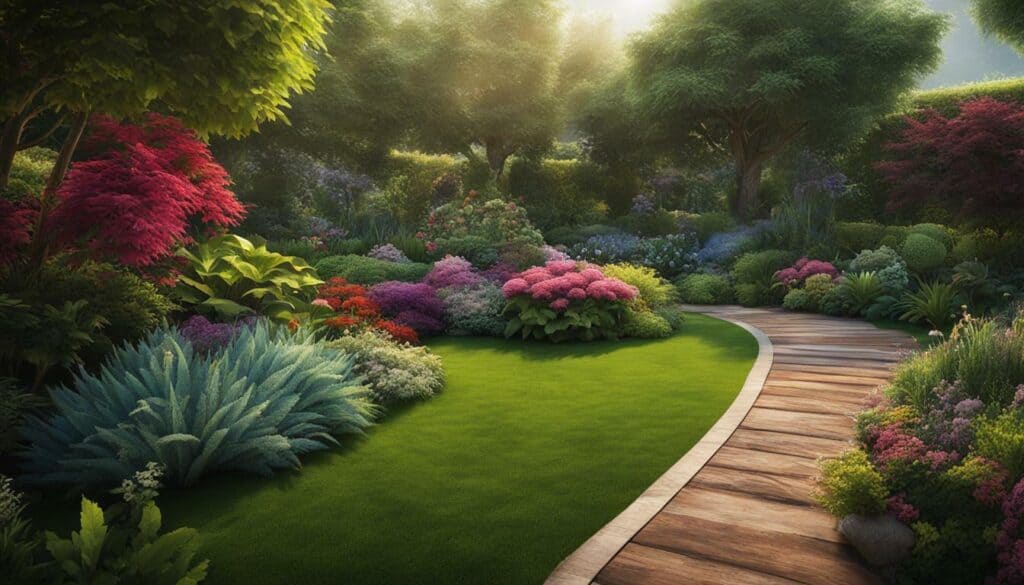
While reviving your garden, it’s crucial to be aware of hidden dangers that may lurk among the blooms. Learn how to identify and deal with poisonous plants to ensure a safe and enjoyable outdoor space.
When it comes to gardening, many plants possess toxic properties that can be harmful if ingested or even touched. It’s important to familiarize yourself with common poisonous plants in order to protect yourself, your family, and your pets. Some common examples include poison ivy, oleander, and foxglove.
To identify poisonous plants, look for warning signs such as leaves with unusual colors, textures, or patterns, as well as plants with thorns or irritants. It’s a good practice to wear gloves and protective clothing when handling unfamiliar plants or weeds. If you suspect a plant is toxic, do some research or consult a gardening expert before attempting to remove or interact with it.
“When it comes to gardening, many plants possess toxic properties that can be harmful if ingested or even touched.”
Properly dealing with poisonous plants
If you discover poisonous plants in your garden, it’s important to handle them with caution. Here are some tips to help you deal with them safely:
- Wear protective clothing, including gloves, long sleeves, and pants, when removing or handling poisonous plants.
- Use a trowel or gardening tool to dig out the roots of the plant, ensuring that you remove as much of the plant as possible.
- Double-bag the plant material in heavy-duty garbage bags and dispose of them in the regular trash. Do not burn or compost the plants, as this may release toxic fumes or spread the toxins.
- After handling poisonous plants, wash your hands thoroughly with soap and water to remove any residue. Avoid touching your face or other exposed skin while handling these plants.
- If you or someone in your family comes into contact with a poisonous plant and experiences a severe reaction, such as difficulty breathing or a rash that covers a large area of the body, seek medical attention immediately.
| Common Poisonous Plants | Identification | Handling Instructions |
|---|---|---|
| Poison Ivy | 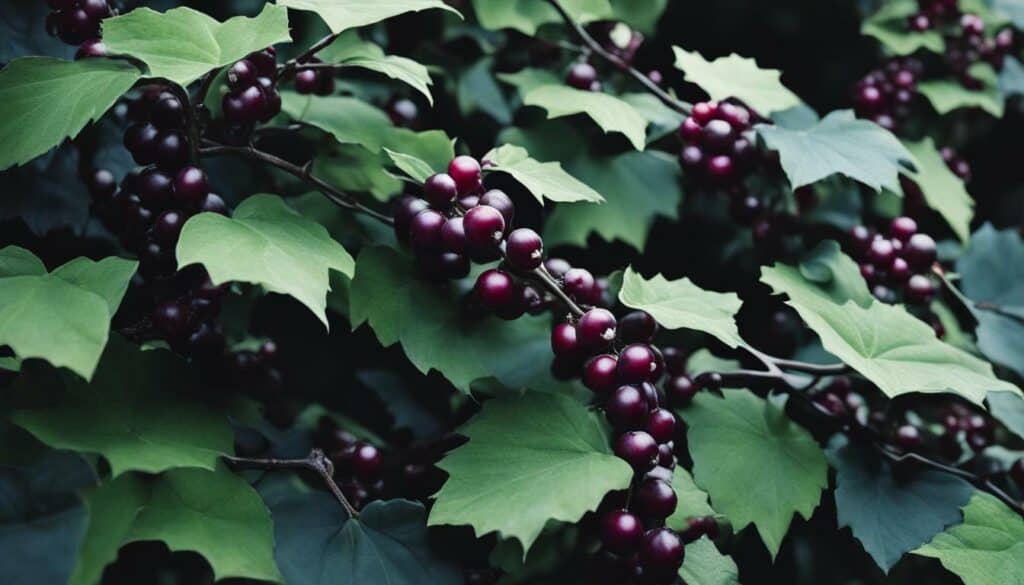 | – Leaves arranged in groups of three – Shiny, smooth-edged leaves – Reddish color in spring and fall |
| Oleander |  | – Clusters of colorful flowers – Long, narrow leaves – Milky sap |
| Foxglove | 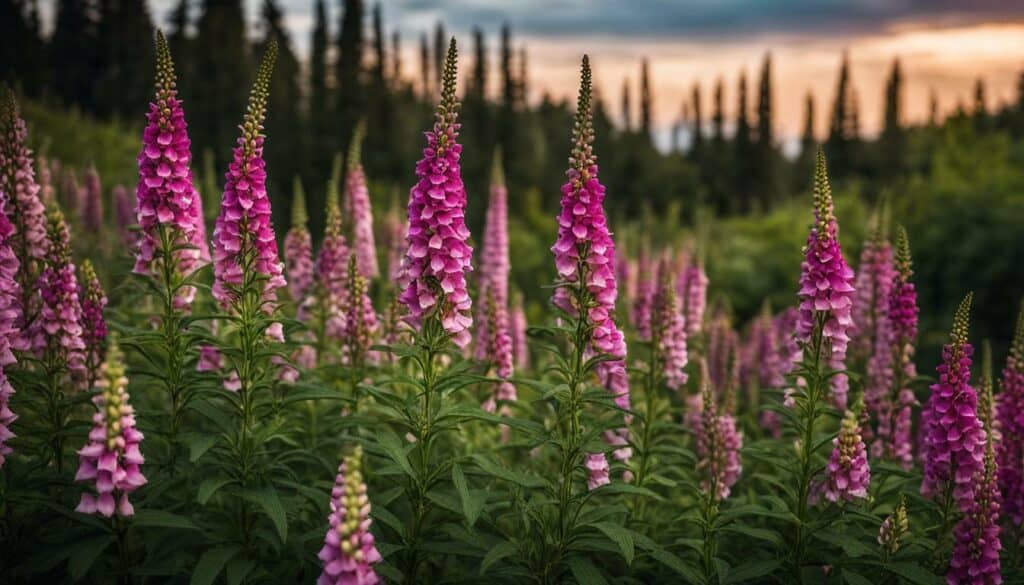 | – Tubular flowers on tall stalks – Arranged in a spike – Colors range from white to pink and purple |
Boosting Soil Fertility with Cover Crops
Enhance the health and fertility of your garden soil by incorporating cover crops into your garden restoration journey. Discover the power of natural fertilizers that will give your plants the nutrients they need to thrive.
Cover crops are an excellent addition to any garden, offering numerous benefits. They improve soil structure, prevent erosion, suppress weeds, and enhance nutrient availability. By planting cover crops, you can protect your soil during the restoration process and ensure its long-term vitality.
There are several types of cover crops to choose from, each with unique characteristics and benefits. Legumes like clover and vetch fix nitrogen in the soil, enriching it for subsequent plantings. Grasses like rye and oats provide excellent weed suppression and organic matter when incorporated back into the soil. It’s essential to select cover crops that suit your climate, soil type, and intended purpose.
When incorporating cover crops into your garden restoration plan, it’s essential to consider timing. Plant cover crops in the fall after clearing out unwanted weeds and shrubs. Allow them to grow and establish throughout the winter, and then incorporate them back into the soil before spring planting. This process helps replenish nutrients, build organic matter, and improves soil structure for healthy plant growth.
| Cover Crop | Main Benefits |
|---|---|
| Clover | Nitrogen fixation, weed suppression, soil erosion prevention |
| Vetch | Nitrogen fixation, weed suppression, attracts beneficial insects |
| Rye | Weed suppression, organic matter, improves soil structure |
| Oats | Quick establishment, weed suppression, serves as green manure |
Remember to mow or cut cover crops before they set seed or become too fibrous, allowing them to break down more easily when incorporated into the soil. The decaying cover crop plants will add valuable organic matter and nutrients, enriching your soil for future plantings.
By incorporating cover crops into your garden restoration efforts, you can boost soil fertility naturally and create a thriving ecosystem. So, get started with cover crops and enjoy the benefits of healthy, nutrient-rich soil in your revived garden.
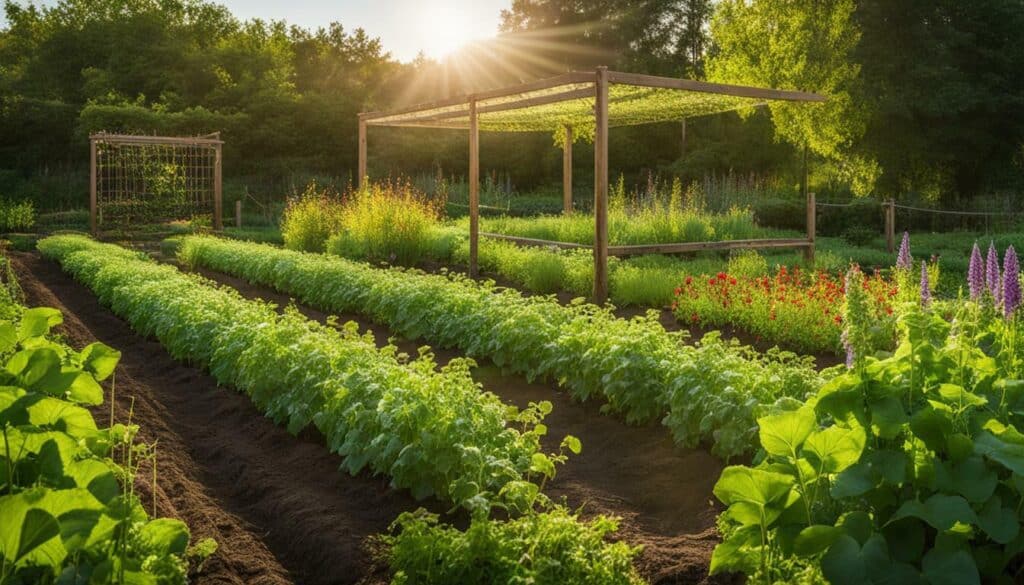
Don’t let all your hard work go to waste. Find out why regular garden maintenance is essential for preserving the beauty and functionality of your newly revived outdoor space.
After investing time and effort in reviving your garden, it’s important to establish a regular maintenance routine to ensure its long-term vitality. Regular garden maintenance not only keeps your outdoor space looking vibrant and attractive but also helps to prevent potential issues that can arise from neglect.
Maintaining your garden involves a range of tasks, including weeding, pruning, watering, fertilizing, and mowing. By staying on top of these tasks, you can prevent the growth of unwanted weeds, keep plants healthy and flourishing, and promote the overall aesthetic appeal of your garden.
Moreover, regular maintenance allows you to address any arising issues promptly and prevent them from escalating into major problems. By inspecting your garden regularly, you can identify and rectify issues such as pest infestations, diseases, or damaged structures before they cause irreversible harm.
In addition to preserving the beauty of your garden, regular maintenance also ensures its functionality. By keeping walkways clear of debris, trimming overgrown branches, and maintaining proper drainage, you can create a safe and enjoyable outdoor space for yourself, your family, and your guests.
In conclusion, regular garden maintenance is crucial for sustaining the beauty and functionality of your newly revived outdoor space. By establishing a routine and staying on top of tasks such as weeding, pruning, and watering, you can enjoy a thriving garden all year round. So don’t let your hard work go to waste – make regular maintenance a priority and reap the benefits of a well-maintained garden.

Take your garden transformation to the next level by incorporating sustainable and eco-friendly practices that will not only benefit your outdoor space but also the environment. Creating a garden that works in harmony with nature is a rewarding and responsible way to enjoy your outdoor oasis. Here are some garden improvement ideas to help you create a sustainable and eco-friendly garden:
- Implement Rainwater Harvesting: Collecting rainwater in barrels or underground cisterns is a simple yet effective way to conserve water and reduce your reliance on freshwater sources. Use the harvested rainwater to irrigate your plants, reducing your overall water consumption.
- Embrace Mulching: Mulching not only helps retain moisture in the soil but also suppresses weed growth and adds nutrients to the garden. Opt for organic mulch made from shredded leaves, wood chips, or straw to enhance soil fertility naturally.
- Choose Native Plants: Selecting native plants for your garden is not only beneficial for the local ecosystem but also reduces the need for excessive water, fertilizers, and pesticides. Native plants are well adapted to the local climate, requiring less maintenance and creating a habitat for native wildlife.
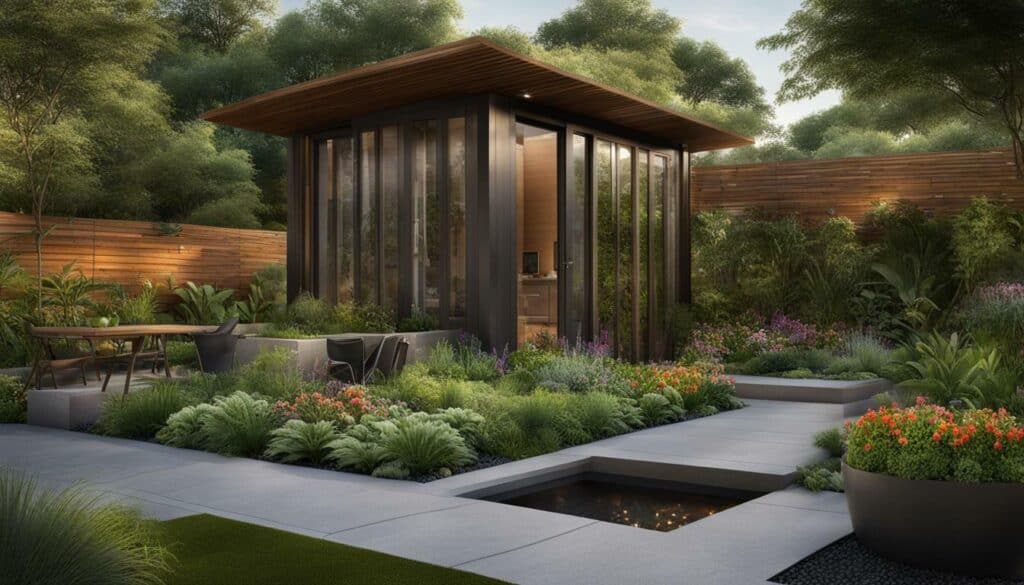
Creating a sustainable and eco-friendly garden is an opportunity to make a positive impact on the environment while beautifying your outdoor space. By incorporating these garden improvement ideas, you can enjoy a thriving garden that supports biodiversity, conserves resources, and promotes a greener future.
Conclusion on The Garden Rehab DIY
With The Garden Rehab DIY guide by your side, you have all the tools and knowledge you need to embark on a garden makeover and restoration journey that will breathe new life into your outdoor space. Get started today and uncover the hidden potential of your garden.
Reviving and restoring a neglected garden may seem like a daunting task, but the effort is definitely worth it. Overgrown gardens can be challenging to manage, leading to soil health issues and obstructed walkways. However, by taking baby steps and approaching the process with patience, you can transform your garden into a beautiful oasis.
Start by observing your garden throughout all seasons, allowing its natural beauty to reveal itself. Make a comprehensive list of what needs to be changed and what can be preserved, ensuring a clear direction for your garden revival project. It’s also crucial to identify any poisonous plants that may pose a threat to both humans and pets.
Testing the soil is another vital step in garden restoration. By assessing its nutrient content and pH levels, you can determine what your garden needs to thrive. Clearing out unwanted weeds and shrubs will create space for new growth and design elements, while pruning and redesigning your garden will give it a refreshed and visually appealing look.
To ensure consistency and harmony in your garden, it’s essential to plan and stick to a theme. Envision what you want your garden to look like and select a theme that reflects your preferences. Be mindful of hidden dangers, such as poisonous plants, and handle them with caution and proper care.
Boosting soil fertility is a key component of garden restoration. Consider using cover crops to add nutrients and organic matter to the soil, enhancing its overall health. Additionally, staying on top of garden maintenance is crucial for long-term success, preventing major overhauls in the future.
Lastly, strive to create a sustainable and eco-friendly garden during your rehabilitation process. Incorporate practices like rainwater harvesting, mulching, and selecting native plants to minimize environmental impact and create a more resilient garden.
By following The Garden Rehab DIY guide and implementing these tips, you can transform your neglected garden into a thriving and rejuvenated outdoor oasis. Embrace the opportunity to revitalize your space and enjoy the beauty and tranquility of your newly restored garden.
FAQ on The Garden Rehab DIY
Q: Can I revive a neglected garden by myself?
A: Absolutely! Reviving and restoring a neglected garden is a do-it-yourself project that can be tackled with the right tips and tricks.
Q: How do I start reviving my garden?
A: Begin by taking baby steps and waiting for a year to see how the natural garden looks in all seasons. Make a list of what needs to be changed and what can be kept.
Q: How do I deal with poisonous plants in my garden?
A: Identify any poisonous plants present and deal with them properly. Be aware of hidden dangers and take appropriate actions to ensure safety.
Q: Why is it important to test the soil before reviving a garden?
A: Testing the soil helps determine what nutrients it lacks and enables you to make informed decisions about improving soil health for better plant growth.
Q: How do I clear out unwanted weeds and shrubs?
A: Start by clearing out weeds and shrubs that aren’t wanted, creating space for new growth. It’s an essential step in achieving a well-maintained garden.
Q: What should I consider when pruning and designing my garden?
A: Consider pruning plants to maintain their shape and health. You can also move rocks around to create a new garden design that suits your vision.
Q: How do I plan and stick to a garden theme?
A: Envision what you want your garden to look like and select a theme that suits your preferences. Planning and sticking to a theme adds coherence and beauty to your garden.
Q: How can I boost soil fertility during the garden restoration process?
A: Planting cover crops is an effective way to add fertility to the soil. These crops help improve soil health and provide natural nutrients for your plants.
Q: Why is regular garden maintenance important?
A: Staying on top of garden maintenance prevents major overhauls in the future. Regular care ensures the long-term vitality of your garden and keeps it looking its best.
Q: How can I create a sustainable and eco-friendly garden?
A: Consider eco-friendly practices such as rainwater harvesting, mulching, and selecting native plants. These practices contribute to a more sustainable and environmentally conscious garden.







Leave a Reply